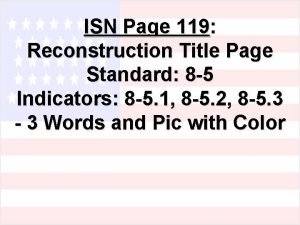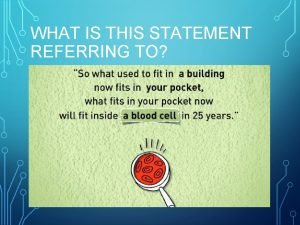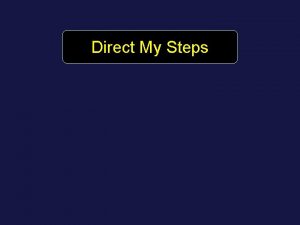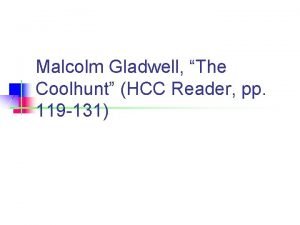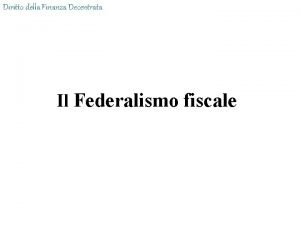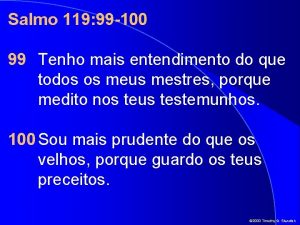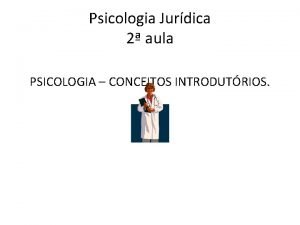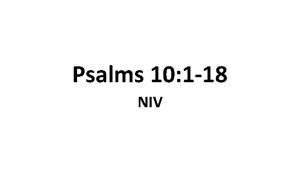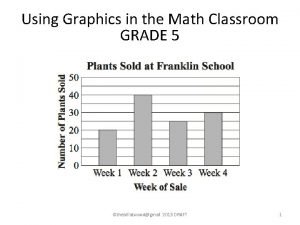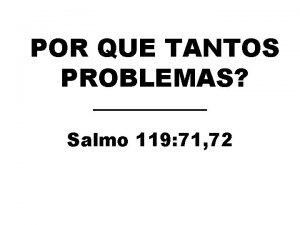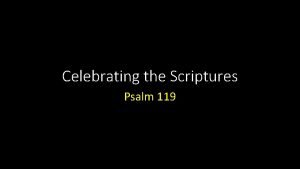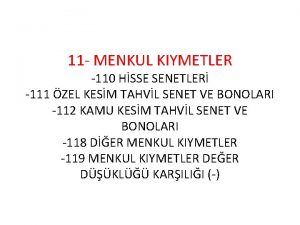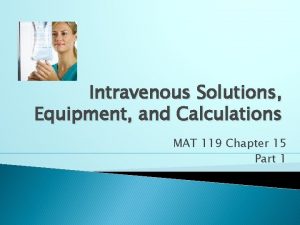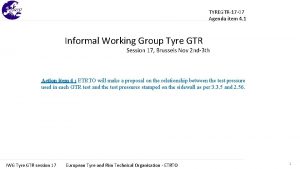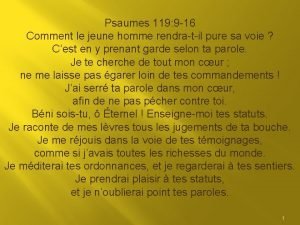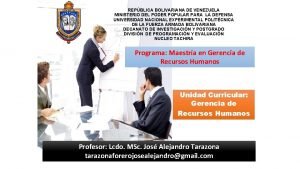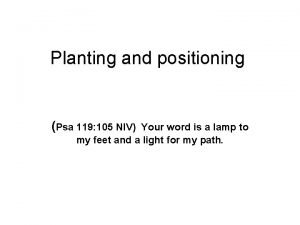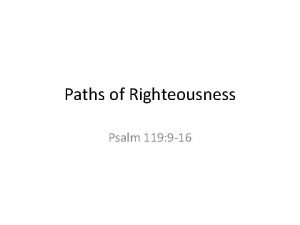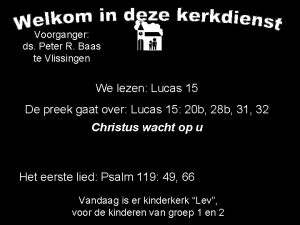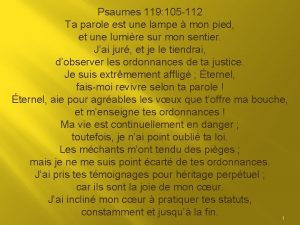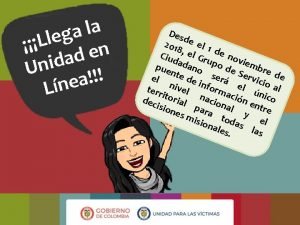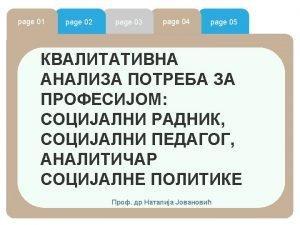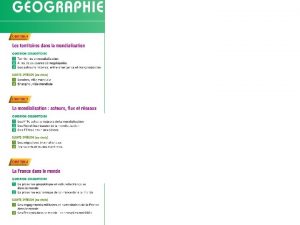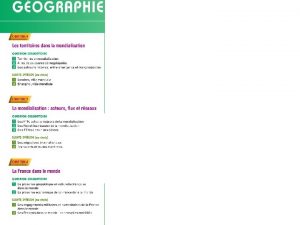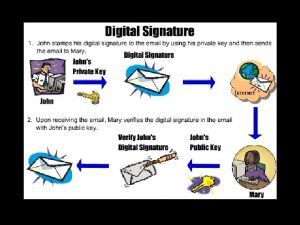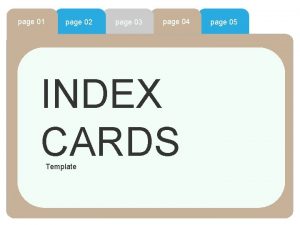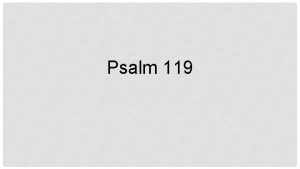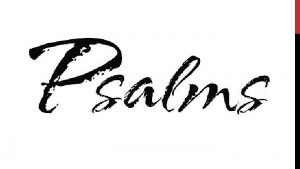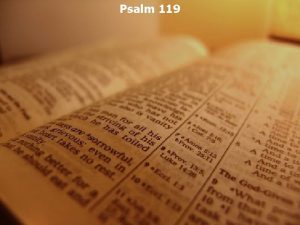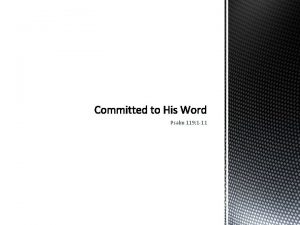January 5 th 2016 page 119 DO I






































- Slides: 38

January 5 th 2016 page 119 DO: I will be able to explain what forms electricity as well as how electricity is harnessed and used in circuits. EQ’s: 1. How would you construct a series and parallel circuit? 2. 2. Why are parallel circuits more effective than series circuits?

Think about it… What makes up electricity? As electrons move what are they transferring? How do the LOCM and LOCE relate to this particular clip? Explain how the electricity is making noise.

Think about it… What makes up electricity? How do the LOCM and LOCE relate to this particular clip? Explain the science of the connection between how atoms, matter, energy, waves, and electricity.

Electric Charges • Three particles that make up an atom: VE I T I POS • Protons • Neutrons • Electrons AL NEUTR NE GA TIV E

The Flow of Charges • Which subatomic particle can move from one object to another? • Electrons! • What does the addition of electrons do to the charge of an object? • The object will become NEGATIVELY charged. • What does the removal of electrons do to the charge of an object? • The object will become POSITIVELY charged. ee- e- ee-

How Charges Interact • When two objects with the SAME charge come into contact, they _______. • When two objects with DIFFERENT charges come into contact, they _______.

Electric Current • What is an electric current? • The continuous flow of electric charges through a material. • What is the unit of measurement for current? • amperes (A) or amps: the amount of charge flowing past a point in a certain amount of time. e-

Potential Difference H • So what is Potential Difference? • The difference in potential energy between two locations. • The difference between a rollercoaster and an electric current is that the potential difference is caused by the difference in electrical charges in two locations, not height. igh Po En te er nti gy al Lo w Po En ten er gy tial

Potential Difference • What’s potential energy (PE)? • On a roller coaster, where does the car have more potential energy? • Can the car move from an area of low PE to high PE without the help of a motor? • It’s the same for electric current! • The charges in a current are like the roller coaster cars. • The track is like the wires. • The motor that gets the cars to the top of the first hill is like the battery.

Potential Difference Cont. • Electric charges will always flow from a region of ______ potential energy to a region of _____ potential energy. • When the charge reaches the negative terminal and enters the battery, it gains electric potential energy as it travels through the battery to the positive terminal. e-

• What is it? Voltage • Another term for potential difference. • What unit is used to measure voltage? • Volts (V) e- • So in a 9 -volt battery, when an electric charge moves from the negative terminal, through the battery, to the positive terminal, how much potential energy does the charge gain? • 9 volts!


Basic Circuits • A circuit is a path through which electricity can flow. • Most circuits have three parts: • An energy source • One or more loads (run by electricity) • Conductors (wires) that connect the two

Parts of a Circuit • Energy Source – A circuit needs an energy source to push a charge through the circuit. • Examples? • Load – a load is a device in a circuit that operates using electrical energy. • Examples? • Conductor – a conductor is a material that allows electrical energy to flow through it easily. • What makes a good conductor? • Examples?

Parts of a Circuit Continued • Resistor – a resistor is an object added to a circuit that restricts the flow of electrical energy. • Resistors inhibit the flow of electric current by producing a voltage drop when current passes through them. They limit current and cause some electric energy to be given off as heat. • Examples? • Switch - a switch is a device that is used to control the flow of current through a circuit. • A switch works by separating (open) or bringing together (closed) two conductors attached to a circuit.

Circuit Switches • Add a switch to your circuit. See what happens when you open and close the switch. • On your notes, draw a circuit with an open switch and a closed switch. Indicate whether the light is on or off. • When an electric current reaches an open switch, the current _____. • This creates an _____ circuit. • When an electric current reaches a closed switch, the current _____. • This creates a _____ circuit. • Why would you want a switch in a circuit?

Closure • Draw your own circuit.

January 6 th 2016 page 121 DO: I will be able to explain how circuits are constructed as well as label the parts of a circuit. EQ’s: 1. How would you construct a series and parallel circuit? 2. 2. Why are parallel circuits more effective than series circuits?

Types of Circuits • Two types of circuits: • Series Circuit • Provides only one possible path for the flow of current. • Parallel Circuit • Offers more than one path for the flow of electricity.

Series Circuits • In a series circuit, the loads are set up in a series, or line, that requires the current to flow through one load before passing through the next. • Create a series circuit using the materials at your table. (the switch is optional) • Draw your circuit on your notes sheet. • Use arrows to indicate the direction the electric current is traveling.

Series Circuits Continued • If you were to disconnect one of the bulbs in your circuit. • What happens to the other bulbs? • Because there’s only one path for the current to follow, a failure or break in any part of the switch will stop the flow of electricity through the entire circuit. • Where have you seen this happen before?

Series Circuits Continued Because all of the loads share the same energy source. This means that the current lowers as more loads are added to the circuit. What if the loads were motors? Would they be able to do as much work if they’re wired in a series? On your notes, list the disadvantages of using a series circuit.

Parallel Circuits • In a parallel circuit, each load has its own path for electricity. • Create a parallel circuit using the materials at your table. (the switch is optional) • Draw your circuit on your notes sheet. • Use arrows to indicate the directions the electric current is traveling.

Parallel Circuits Cont. • If you were to disconnect one of the bulbs in your circuit. • What would happen to the other bulbs? • Because a parallel circuit provides more than one path for electricity, a failure in one part of the circuit will not affect another part of the circuit. • Where have you seen this happen before?

Parallel Circuits Cont. • When you reconnect your parallel circuit the bulbs are still bright. • Even if all bulbs are connected or some are out the brightness is the same. • The loads in a parallel circuit do not share current in the way that loads connected in a series will share. • Each load connected to a parallel circuit uses the full voltage of the energy source. • What if the loads were motors? • Would they be able to do as much work if they’re wired in a series?

Series VS. Parallel • • What’s the big deal? • What happened when you added more loads to a series circuit vs a parallel? • Why don’t we use Parallel circuits all the time? Which would cause the energy source (battery) to be drained more quickly? • Which uses more electric energy?

January 8 th 2016 DO: page 123 I will be able to explain what forms electricity, as well as construct & diagram circuits that harness electricity, and compare and contrast the advantages and disadvantages of each type. EQ’s: 1. Diagram a parallel and series circuit. Include a load, source, and path for each) 2. Compare and Contrast series and parallel circuits. 3. Explain the technical issues that could arise and cause an incomplete path. 4. Explain how circuits can be used to express the law of conservation of energy.


Is it a Series Circuit or Parallel Circuit?

January 11 th 2016 ASNSWER THE EQ’s: page 123 1. Diagram a parallel and series circuit. Include a load, source, and path for each) 2. Compare and Contrast series and parallel circuits. 3. Explain the technical issues that could arise and cause an incomplete path. 4. Explain how circuits can be used to express the law of conservation of energy.


Is it a Series Circuit or Parallel Circuit?




Work Time • MIDTERM CORRECTIONS OR • Finish working on the section 4 and 5 Reviews in Chapter 20 of the textbook. (page 706 -717) OR

Closure 3 - Things that I could teach 2 - Questions for a test 1 - A song, show, movie that connects is…

Don’t forget to visit Brain POP!! https: //www. brainpop. com/technology/energytechnology/electriccircuits/ https: //www. brainpop. com/technology/energytechnology/currentelectricity/
 January 2017 chemistry regents answers
January 2017 chemistry regents answers Page 119
Page 119 Think pair and share page 119-120
Think pair and share page 119-120 2016.html?page=
2016.html?page= Apa format for title page
Apa format for title page Psalm 119 verse 133
Psalm 119 verse 133 Mat 119
Mat 119 Pp 119
Pp 119 Federalismo fiscale art 119
Federalismo fiscale art 119 Psalm 119 meditation
Psalm 119 meditation Omb a119
Omb a119 Salmo 119 99
Salmo 119 99 Lei nº4.119/1962
Lei nº4.119/1962 Mat 119
Mat 119 Psalm 10 1-18
Psalm 10 1-18 Salmo 119-105
Salmo 119-105 Number sense
Number sense Salmo 119:71-72
Salmo 119:71-72 Psalm 22 nbv
Psalm 22 nbv Psalm 119 overview
Psalm 119 overview Psalm 119 verse 17-24
Psalm 119 verse 17-24 Menkul kıymet değer düşüklüğü
Menkul kıymet değer düşüklüğü Drop factor equation
Drop factor equation Fmvss 119
Fmvss 119 Tropical cyclone
Tropical cyclone Ps 119
Ps 119 Nab 119:105
Nab 119:105 Psaumes 119 9
Psaumes 119 9 Ppm 119
Ppm 119 Psalm 40:1-17
Psalm 40:1-17 Articulo 122 lottt
Articulo 122 lottt Psalm 105 niv
Psalm 105 niv Psalm 119:9-16
Psalm 119:9-16 Psalm 119 liedboek
Psalm 119 liedboek Psaume 119 signification
Psaume 119 signification Psaumes 119:105
Psaumes 119:105 Mat 119
Mat 119 01 8000 911 119
01 8000 911 119 Psalm 119:33-40 nkjv
Psalm 119:33-40 nkjv

